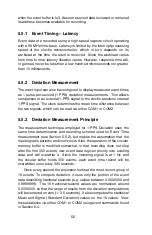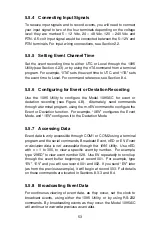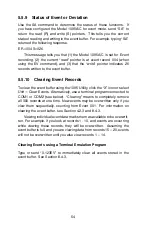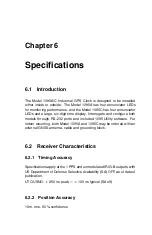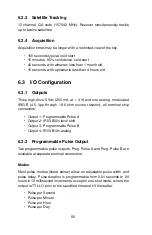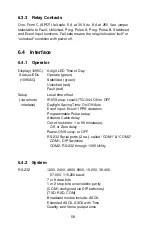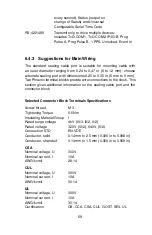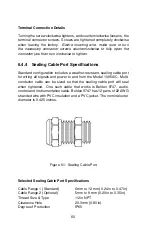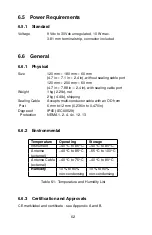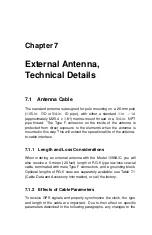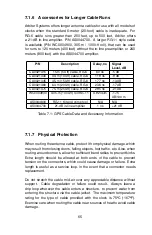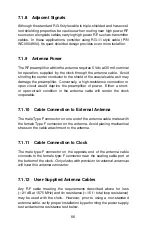
set the cable delay using the 1095 Utility, see Cable Delay in GPS
Configuration window under the System Tab in Section 4.2.3. However,
the Model 1095A/C cannot compensate for the delay of output timing
signals, therefore a delay in time must be expected due to the type and
length of cable.
Electromagnetic waves travel at the speed of light (C) in free space
or vacuum and a fraction of that speed through cabling. The speed of
an electromagnetic wave in free space is given by Constant 5.7.
(5.7)
C
≈
9
.
84
×
10
8
f eet/second
Since electromagnetic waves travel slower through any cable, cable
manufacturers normally specify cable with a velocity factor (VF), which is
a percentage of the speed of light in free space, and characteristic of the
specific cable. The velocity factor for the RG-6 cabling used by Arbiter
Systems for GNSS antenna connections, is about 83% of C. Most
transmission lines have velocity factors in the range of 65% to 97%.
Using these values you can determine the actual time delay in your
cable distribution system and compare it to your required accuracy. As
an example, 840 feet of RG-6 cable (with a velocity factor of 83%) would
delay the timing signal by approximately one microsecond. For IRIG-B
timing applications, these delays may not be important, compared to
other criteria. Otherwise, you would be forced to compensate for the
time delay using another method, such as advancing the timing output
or placing another clock at the remote site.
5.5
Input Signal Timing
This section describes the two main features of input signal timing in the
Model 1095A/C.
• event recording
• 1-PPS deviation measurement
These features are set up through the 1095 Utility (see Sec-
tion 4.2.3), or by using a terminal or terminal emulation program.
Recorded with 1-microsecond resolution, acceptable event signal levels
are in three voltage ranges: 5 – 12 Vdc, 24 – 48 Vdc and 120 –
240 Vdc.
Use a terminal emulation program and either COM1 or
COM2 with specific commands to recall individual recorded events (see
Section 8.3.3 and Section 8.4). The Model 1095A/C marks event data
when viewed or retrieved using one of these two methods. Thus, if no
event data points are viewed or retrieved, recording will be suspended
51
















